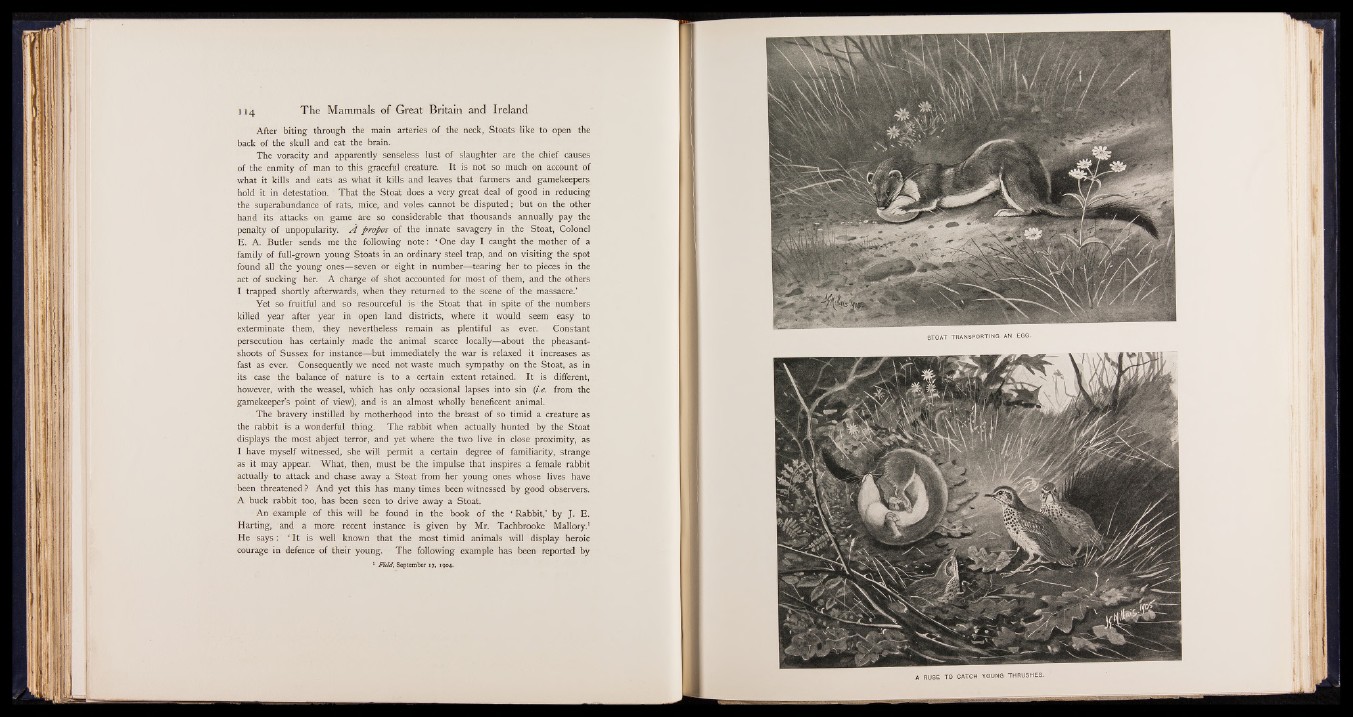
After biting through the main arteries of the neck, Stoats like to open the
back of the skull and eat the brain.
The voracity and apparently senseless lust of slaughter are the chief causes
of the enmity of man to this graceful creature. It is not so much on account of
what it kills and eats as what it kills and leaves that farmers and gamekeepers
hold it in detestation. That the Stoat does a very great deal of good in reducing
the superabundance of rats, mice, and voles cannot be disputed; but on the other
hand its attacks on game are so considerable that thousands annually pay the
penalty of unpopularity. A propos of the innate savagery in the Stoat, Colonel
E . A. Butler sends me the following note: ‘ One day I caught the mother of a
family of full-grown young Stoats in an ordinary steel trap, and on visiting the spot
found all the young ones—seven or eight in number—tearing her to pieces in the
act of sucking her. A charge of shot accounted for most of them, and the others
I trapped shortly afterwards, when they returned to the scene of the massacre.’
Yet so fruitful and so resourceful is the Stoat that in spite of the numbers
killed year after year in open land districts, where it would seem easy to
exterminate them, they nevertheless remain as plentiful as ever. Constant
persecution has certainly made the animal scarce locally—about the pheasant-
shoots of Sussex for instance—but immediately the war is relaxed it increases as
fast as ever. Consequently we need not waste much sympathy on the Stoat, as in
its case the balance of nature is to a certain extent retained. It is different,
however, with the weasel, which has only occasional lapses into sin (i.e. from the
gamekeeper’s point of view), and is an almost wholly beneficent animal.
The bravery instilled by motherhood into the breast of so timid a creature as
the rabbit is a wonderful thing. The rabbit when actually hunted by the Stoat
displays the most abject terror, and yet where the two live in close proximity, as
I have myself witnessed, she will permit a certain degree of familiarity, strange
as it may appear. What, then, must be the impulse that inspires a female rabbit
actually to attack and chase away a Stoat from her young ones whose lives have
been threatened ? And yet this has many times been witnessed by good observers.
A buck rabbit too, has been seen to drive away a Stoat.
An example of this will be found in the book of the ‘ Rabbit,’ by J . E.
Harting, and a more recent instance is given by Mr. Tachbrooke Mallory.1
He s ay s : ‘ It is well known that the most timid animals will display heroic
courage in defence of their young. The following example has been reported by
1 Field, September 17, 1904.